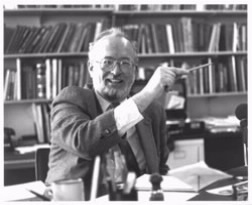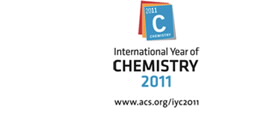FOR IMMEDIATE RELEASE | March 08, 2011
ACS to honor MRI, a life-saving medical tool, as National Landmark technology during ceremony at Stony Brook University
STONY BROOK, N.Y., March 8, 2011 — Millions of lives have been saved thanks to Magnetic Resonance Imaging (MRI), which permits early detection of severe conditions, such as strokes, multiple sclerosis and cancer. On March 11, the American Chemical Society (ACS) will designate the invention of MRI by Paul Lauterbur, Ph.D., as a National Historic Chemical Landmark in a ceremony at Stony Brook University.
“Paul Lauterbur’s invention of MRI has transformed diagnostic medicine by providing a tool for the non-invasive, in vivo examination of soft tissues, such as the heart, brain and muscles and for the early detection of cancer and other diseases,” ACS President Nancy B. Jackson, Ph.D., said. “It was the genius of Paul Lauterbur to realize that nuclear magnetic resonance signals could generate multidimensional images. It is a seminal scientific achievement, worthy of acclaim and historic recognition.”
Media Contact
Keith Lindblom
202-872-6214
k_lindblom@acs.org
On behalf of ACS, Jackson will present a plaque honoring the invention of MRI to John H. Marburger, III, Vice President for Research at Stony Brook University. Marburger served as Science Advisor and Director of the Office of Science and Technology Policy to President George W. Bush. From 1980 to 1994, Marburger was President of Stony Brook University.
"Paul Lauterbur's path-breaking work on magnetic resonance imaging has always been a source of pride for Stony Brook University,” Marburger said. “Now, the American Chemical Society's declaration of this work as a National Historic Chemical Landmark raises the visibility of this achievement in a broader community. Most people know that MRI is a powerful medical diagnostic tool, but few stop to think how it came into existence. The Landmark designation gives us an opportunity to tell the story of chemistry in action, and encourages us to tell it in new ways to wider audiences. We are proud to be the birthplace of this remarkable technology and are grateful to ACS for granting it Landmark status."
Lauterbur began his work at Stony Brook University in the early 1970’s by researching applications of nuclear magnetic resonance (NMR) imaging, an indispensible tool for chemical analysis. Lauterbur’s great achievement was to use the spatial information contained in NMR signals to make three-dimensional pictures. This led to a 1973 paper in Nature magazine announcing that he had generated multidimensional images of macroscopic objects. “A possible application of considerable interest…would be the in vivo study of malignant tumors,” he observed.
Lauterbur’s research was advanced by the British physicist Sir Peter Mansfield, Ph.D., Emeritus Professor of Physics at the University of Nottingham. The two shared the 2003 Nobel Prize in Physiology or Medicine for their discoveries concerning magnetic resonance imaging.
Today, MRI is used worldwide in the management of a wide range of diseases, including cirrhosis of the liver, uterine fibroids and a variety of cancers. But MRI could not have been developed without the invention of NMR, which will be recognized in a separate ceremony on April 8, 2011, at Agilent Technologies (formerly Varian Associates) in Santa Clara, Calif.
ACS established the National Historic Chemical Landmarks program in 1992 to recognize seminal events in the history of chemistry and to increase awareness of the contributions of chemistry to well-being of society. Other events recognized through this program have included the world’s first synthetic plastic, the discovery of penicillin, the development of Tide laundry detergent and the work of notable chemists such as Joseph Priestley and George Washington Carver. For more information about the Landmark program, visit www.acs.org/landmarks.
###
Members of the press are invited to attend the Landmark designation events, all of which will take place on the Stony Brook University campus in Stony Brook, N.Y. Events begin with the Landmark Designation and plaque unveiling at 1:00 p.m., in the Chemistry Building Lobby. A reception and symposium titled, “The Future of Bioimaging,” will take place in the Charles B. Wang Center Theater starting at 2:30 p.m., with a reception and banquet to follow.
Press may RSVP for the event by contacting Norma Reyes, Department of Chemistry Assistant to the Chair, Stony Brook University at norma.reyes@stonybrook.edu or 631-632-7885.

nance Imaging (MRI). MRI is a commonly performed
non-invasive medical imaging technique.
High-resolution image.


